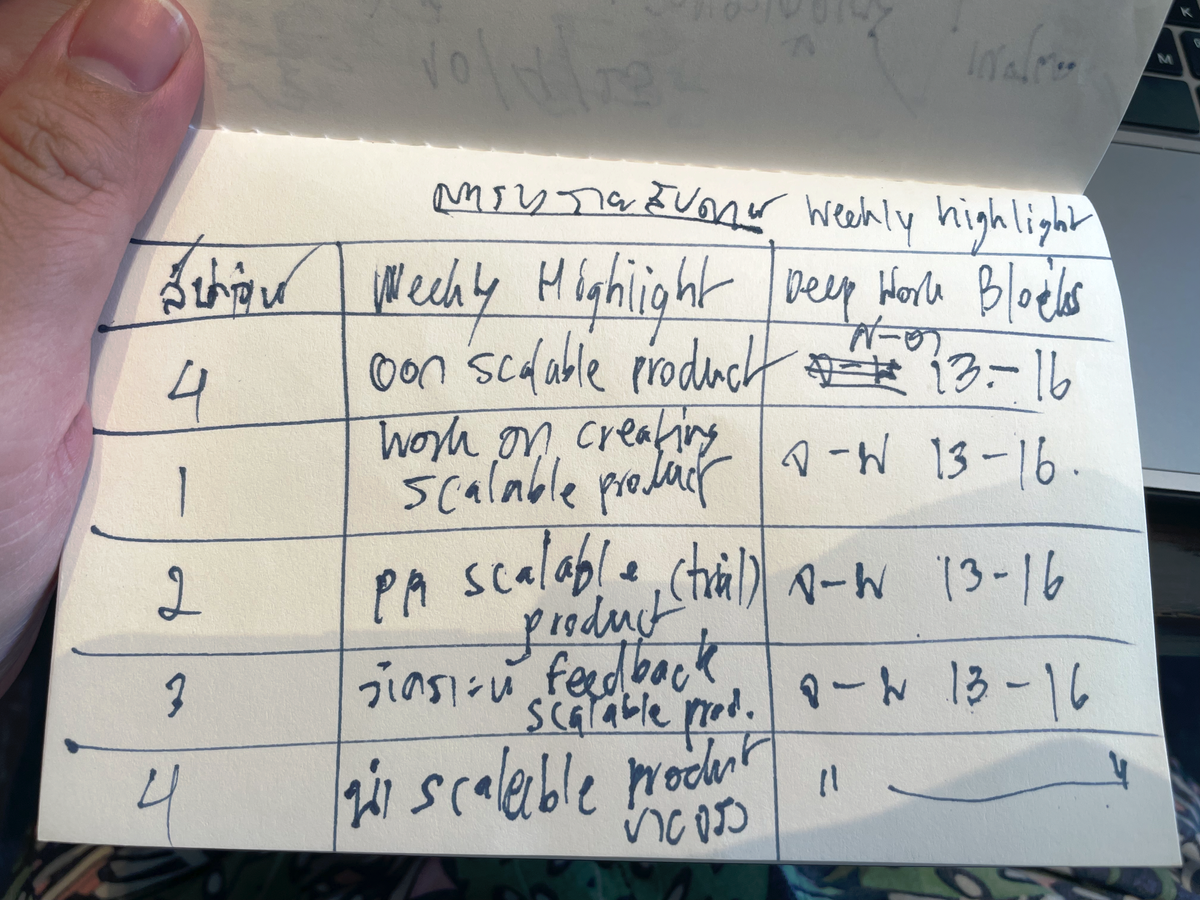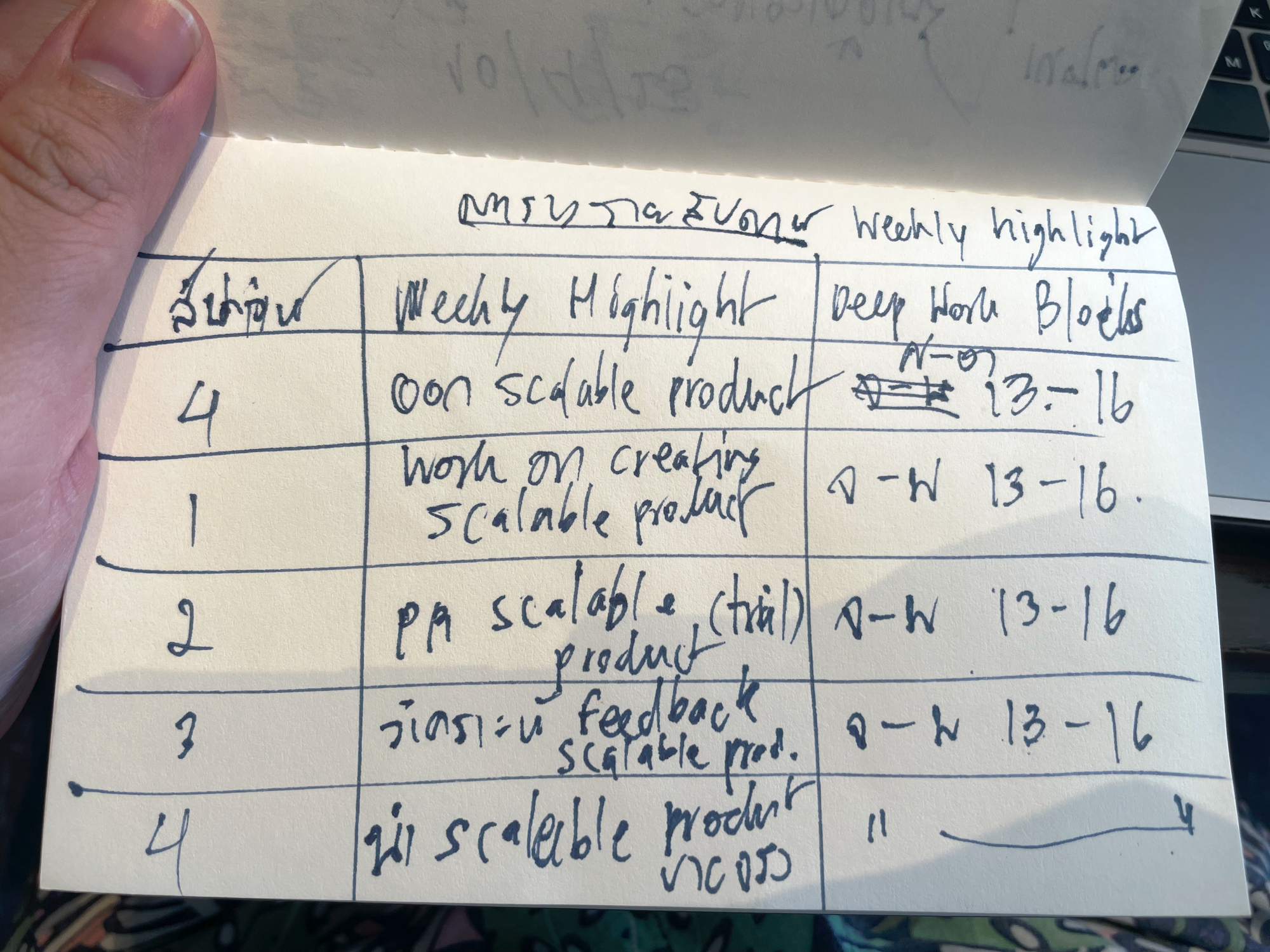Lazily Productive

I used to read a ton of self-development books, but none of the techniques really stuck. Time Boxing, Priority Metrics, Pomodoro—nothing seemed to work for me. But recently, I found a way to be productive that finally fits. What is it? Let’s take a look.
These days, I’ve switched to working based on instinct and mood. For example, if I have a tutoring session, I’ll go teach, then just stay at the same café and do other work I feel like doing. Strangely, I get things done faster—and the quality is better too.

But that doesn’t mean there’s no planning involved. I discovered a planning style inspired by Slow Productivity, breaking things down into four parts:
🍀 Part 1: Monthly Plan
Set only one or two main goals for the month—only 1–2! Choose what truly matters, things that could significantly improve your life.
🍀 Part 2: Supportive Work
These are tasks that aren’t essential and should only be done when necessary. For me, this includes translation work—something I can outsource, but I’ll do it myself if I’m short on cash (lol). Why include this? Because we need to define clearly what not to do. We often waste time on minor tasks like replying to emails or doing things that only slightly improve our lives. We must learn to cut out low-priority work.
🍀 Part 3: Weekly Schedule
Like the sample image in this article, each day should have a highlight and a Deep Work Time Block—a focused period when no one is allowed to interrupt. That’s when you put in all your energy and resources. For me, deep work happens only from 1 PM to 4 PM, Monday through Wednesday. Outside of that, I let myself daydream, read, and explore whatever catches my interest.
🍀 Part 4: Reflection
Ask yourself:
⭐️ How much progress have I made on my main goal?
⭐️ What tasks took up a lot of time but weren’t worth it?
⭐️ What made me feel “proud” this month?
⭐️ How can I adjust my work rhythm next month?
Actually, I’m at the reflection stage right now, so let’s do it:
⛵️ My goal is 30% complete. I wanted to create a scalable product and ended up publishing 7 e-books on a reader platform. Though sales are still low, it’s a promising market. The higher pricing and long-term presence on bookstores help with search visibility—it’s a long game.
⛵️ Surprisingly, there were no time-wasting tasks this month. Everything I worked on was effective!
⛵️ I’m proud that my e-books are selling, and that online bookstores like Chulalongkorn Book Center and Hytexts have reached out to list them.
⛵️ As for adjusting next month, I think the current pace is just right. Maybe I’ll refine my break times to ensure my brain gets real rest—like just lying down and listening to music.
Now let’s talk about what “lazy yet productive” really means. If you look at the first step in the plan—just 1–2 goals per month—you’ll see the key. Don’t over-plan. Don’t cram your to-do list. Just focus on what truly matters right now and give it your best. Leave time for rest and daydreaming. (You’ll notice in my weekly schedule, I only do true Deep Work for three half-days a week.)
In the book Slow Productivity, there’s a story about a New York Times writer who spends months lying under trees thinking. That’s the kind of flow we need—freedom to not be in front of a screen all day. That’s pretty much my life now. I may not be making a lot of money, but I have plenty of time—and for that, I’m grateful.
I believe in doing meaningful, quality work over doing a lot or looking constantly busy. Slowing down makes every task more meaningful.
How about you? What are your “lazy yet productive” habits? Share them with me—I’m excited to hear!